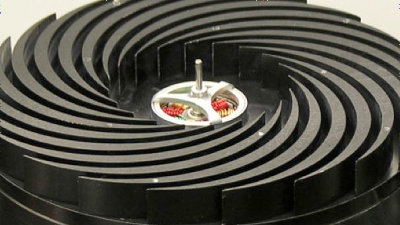What I saw after dismantling Dyson's cyclone vacuum cleaner apart

If you look at the machine you want to disassemble "DisassemblyFor electric appliances consisting of many parts is an irresistible target. Disassembling "Dyson" vacuum cleaner which separates garbage and air with innovative "cyclone technology", it seems that a rather interesting background got glimpse.
Fictiv | Hardware DNA: Dyson Ball Vacuum Teardown
https://www.fictiv.com/resources/starter/hardware-dna-dyson-ball-vacuum-teardown
Model creation using 3D printers in San Francisco, USAFictivI disassembled the "DC 25" (not released in Japan) of the ball type cyclone vacuumer which Dyson had previously sold separately.
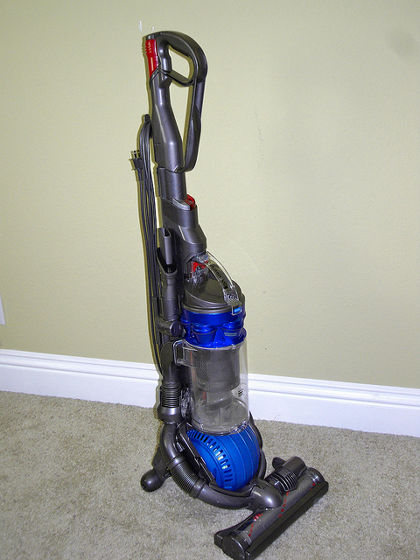
ByDirtyblueshirt
When I arranged all the parts and arranged the parts, it became like this.

◆ Motor part
Disassembling the motor located at the bottom of the DC 25 looks like this. A round case is characteristic.

The motor is contained in a purple ball type case. Polypropylene (PP) which increased strength by mixing fibers is used for the material of the case.

The housing containing the motor is designed to combine the air inlet and the exhaust outlet to discharge the sucked air.

It is like this when the motor body is up. The whole case is made of press-formed steel (iron), and it is said that linear marks (press marks) formed at the time of pressing are seen at all times. It may be aiming for cost reduction and weight reduction that it is not a casting made by melting metal. The resin parts inside the case are adopted as a method of fitting and fixing them in a melted condition with heat.

The turbines (blades) that rotate at high speed and suck air can also take a glimpse of ingenuity to realize low cost.
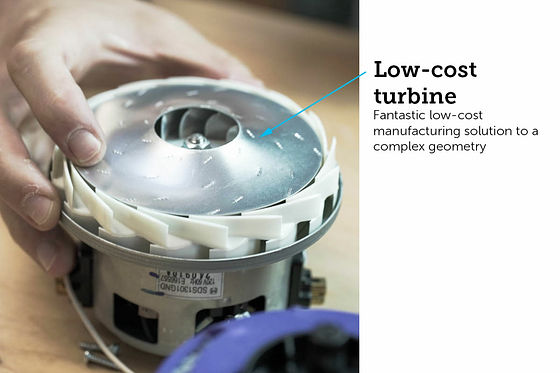
◆ Vacuum head part
The vacuum head is the part where the roller rotates at the tip of the vacuum cleaner and scrapes dust. The DC 25 has a form in which the vacuum cleaner body and the vacuum head are connected.

Brush roller part to scrape rubbish. The number of brushes themselves is not so much, and I get a lot of lonely impression compared to the 2015 model vacuum cleaner. It seems that lint and the like are often entwined with the brush.
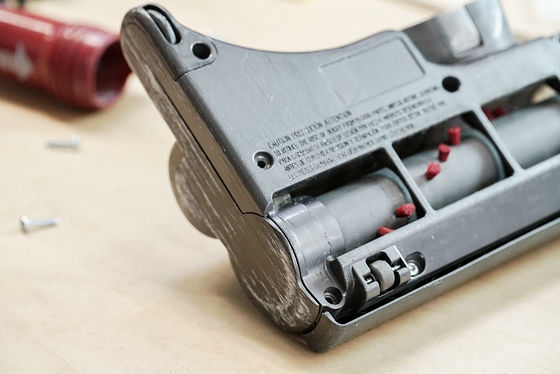
The roller is driven by the motor through the belt. By adopting a belt without using gears, we are realizing high energy efficiency.
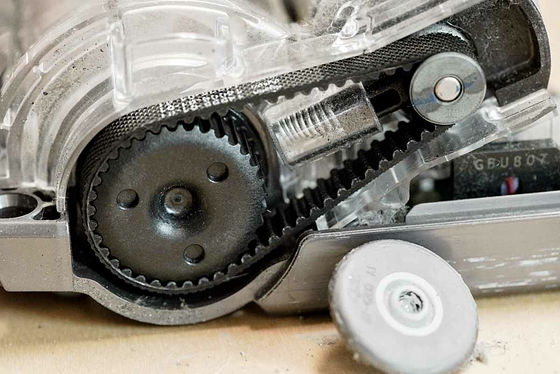
The motor is equipped with the only printed circuit board in this model. Since there is a condenser attached side by side with the board, Fictiv estimates "It is a decompression circuit for lowering the voltage and driving a small motor".
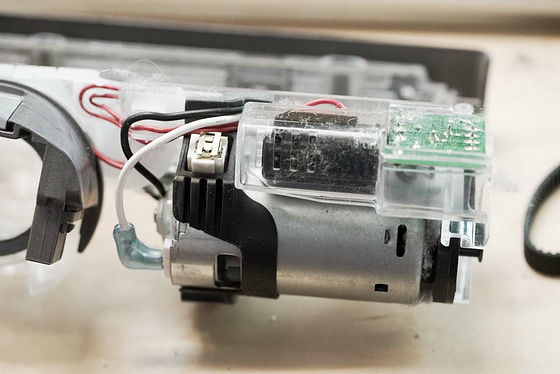
Cyclone section
It also decomposes the cyclone part which is the most important technology of Dyson vacuum cleaner.
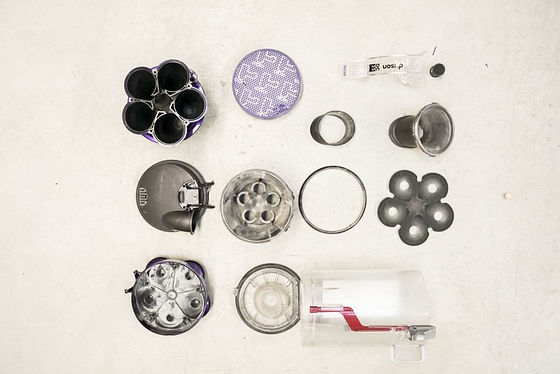
Five cyclones placed upside down and a black cover over it. In the product as of 2015, "2 Tier Radial Cyclone" with two layers of cyclone is used, but it seems that it was a type of one layer at this time.
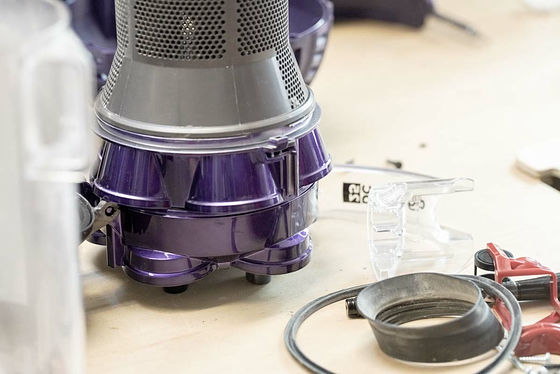
The nozzle part of the cyclone where the air that sucked in the garbage is sucked. Dyson 's cyclone technology is structured to separate air and dust by centrifugal force by winding a high - speed vortex on the conical surface.
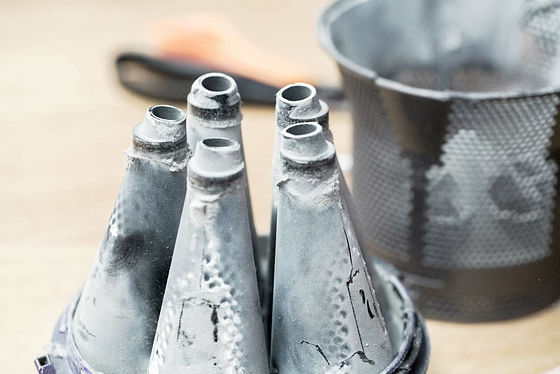
A black cover that covered the cyclone. Although it is said that the fine mesh is molded with a metal mold, the impression that rough molding is transmitted as a whole is transmitted from the appearance of the rough surface of the surface and the state where the burr is left.
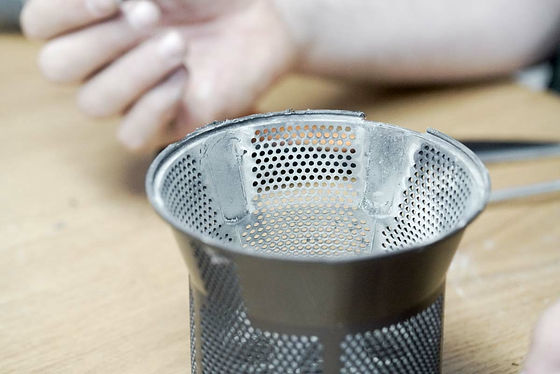
The button to open the lid's lid and make the contents beautiful consists of only one part without having an extra mechanism. At the same time it is a simple structure and also accented as a color difference on the design.
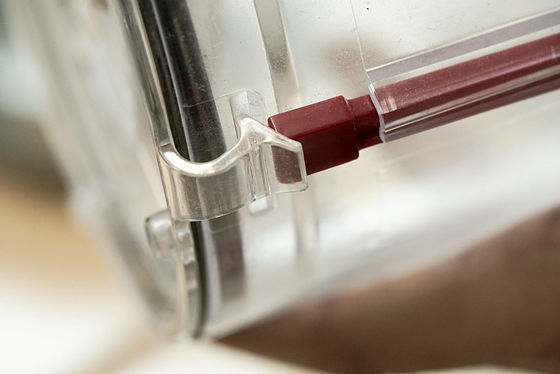
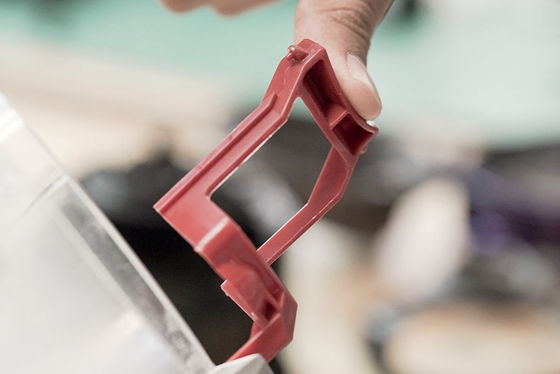
◆ Handle part
A handle part for grasping the handle and moving the vacuum cleaner body. Since it is the part to which the greatest force is applied, an aluminum pipe which shines silver is used. In addition, it seems that various types of resin materials are also used, ABS is used for parts that are noticeable, PP is used for parts that are inconspicuous, and PP-containing glass fiber and polycarbonate are used for parts where force is applied It is said that we are.
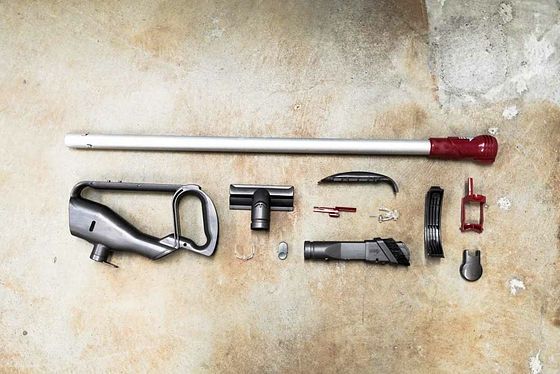
However, even with the parts of the noticeable part, there are also marks of molding remaining in this way.
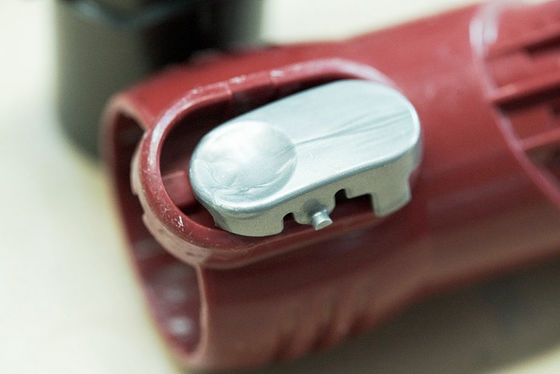
By the way, it seems that the thickness of the member is designed to 2.5 mm at almost all places.
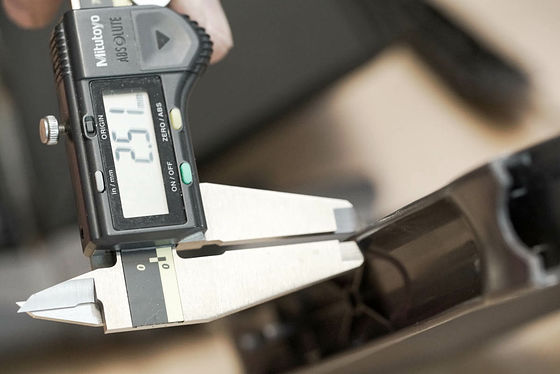
On the other hand, "rib" to increase the strength of plastic is 1.5 mm.
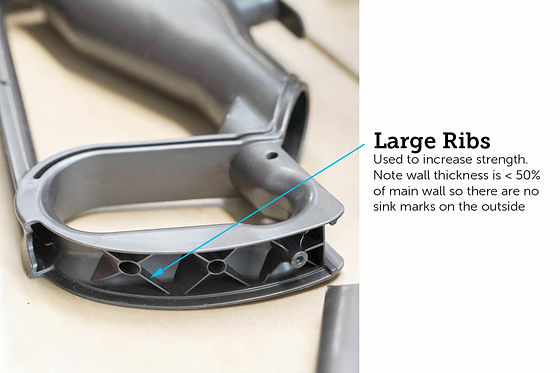
However, when resin-molded parts with thick parts, irregularities are generated due to contraction of the material "Sink"And unnecessary patterns remain on the surface"Flow markThere is a possibility that molding defects such as "may occur. Even in such a case, although it is possible to solve the problem by adjusting the temperature at the time of molding or by adjusting the flowing direction of melted resin by improving the mold, it is apparently The impression that Dyson does not stick around so much is transmitted.
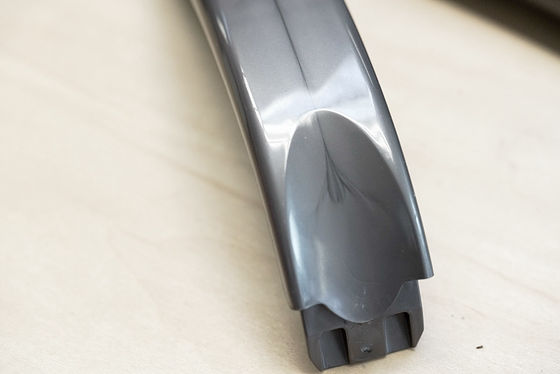
Please note that this situation also has a glimpse in the model sold in 2015. It may be said that the points that companies place emphasis are clearly appearing, apart from good quality, whether to emphasize the beauty of appearance, function, or cost.
◆ Hose and Vacuum Cleaner
At the end is the disassembly of the largest body part. We will mainly observe large parts in the center of the picture.
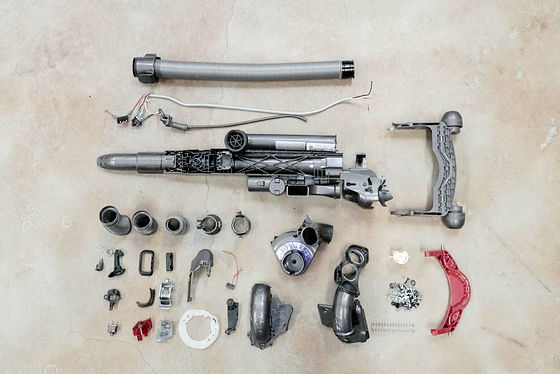
There is a structure to relieve the load on the code and to prevent cord disconnection. According to Fictiv which disassembled this product, Dyson's vacuum cleaner is sold all over the world, but the voltage conversion device to correspond to different voltage in the areaNot built inAnd that. Instead, Fictiv says that "a big switch for industrial use" is used, and although the place pointed out is a little unknown, I understand that it is a simple structure anyway.
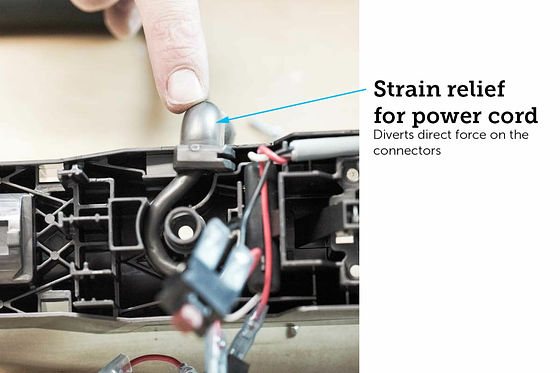
Fictiv's most eye-catching part is this part. It is thought that it was difficult to mold using molds because it has a complex structure while also looking at size.
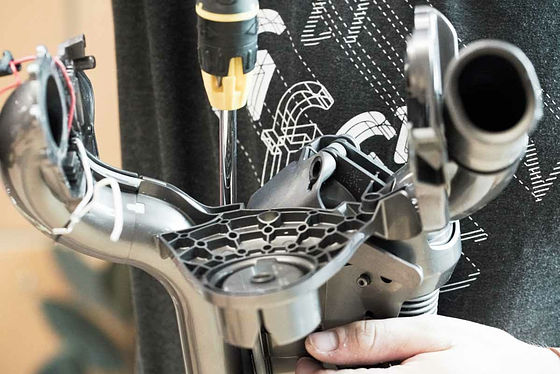
If you observe closely, you can see that the part extending in the left and right was divided in this part. It seems that one complicated structure was formed by sticking each part using ABS material with adhesive. If you say "glue", it feels like a simple structure, but in reality it will be a big force, so it should not be that simple story.
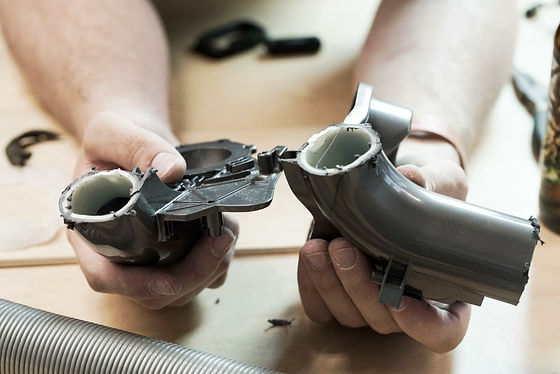
The top part of the hose vortex is painted with silver paint. This is probably Fictiv expecting paint on the surface with the bellows hose shrunk as "tight".
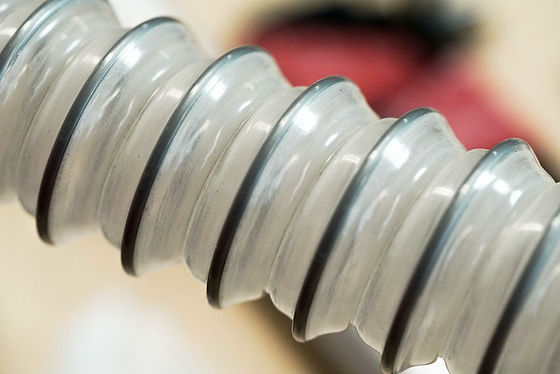
The wall thickness of the main structure is 2.5 mm here too.
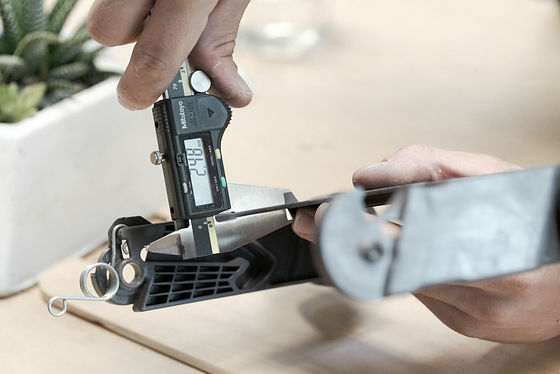
The rib thickness was 1.5 mm.
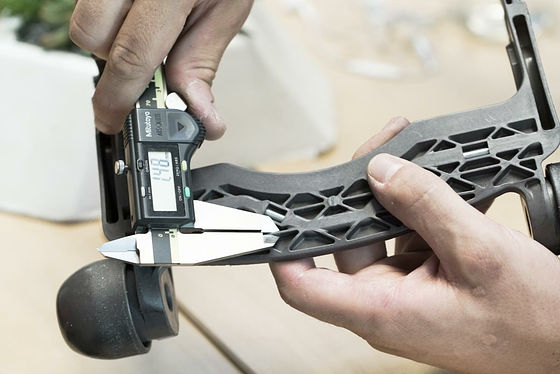
One piece that you can understand sink marks of resin. "Locator Pin" and "Ejector Pin" out of the three large and small holes are the holes derived from the mold, so they always occur at the time of molding, but the "Sink Marks" whose surface is dented becomes the so-called "sink" It is. It is not an exaggeration to say that it is a part where the precision and quality of die molding appear as it is due to the phenomenon that the surface shrinks as the resin solidifies and the surface is dented by pulling the resin to ribs on the back side.

It is a very interesting thing to see a philosophy of corporate technology and product creation by disassembling one product in this way. Interest is puzzling about what it is like when disassembling products from manufacturers all over the world.
Related Posts:
in Hardware, Posted by darkhorse_log







